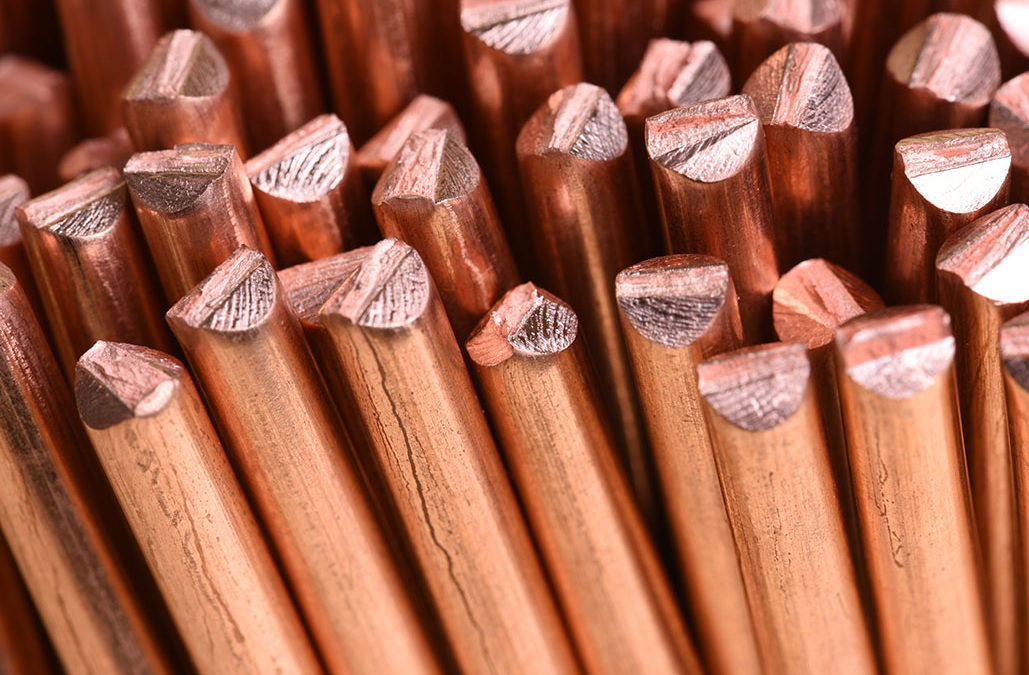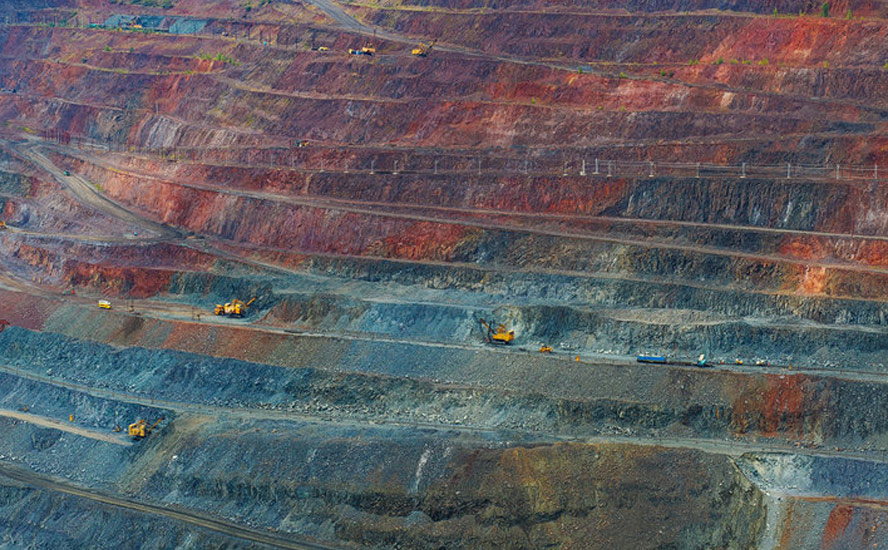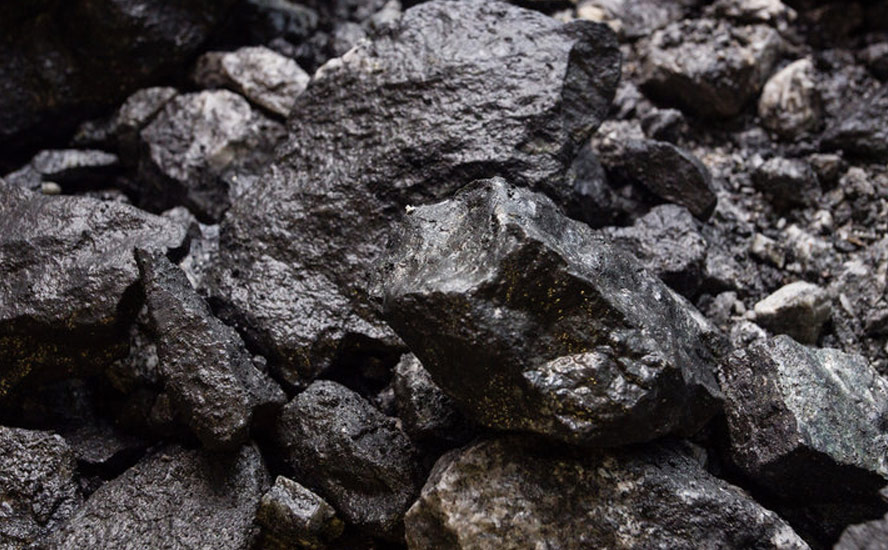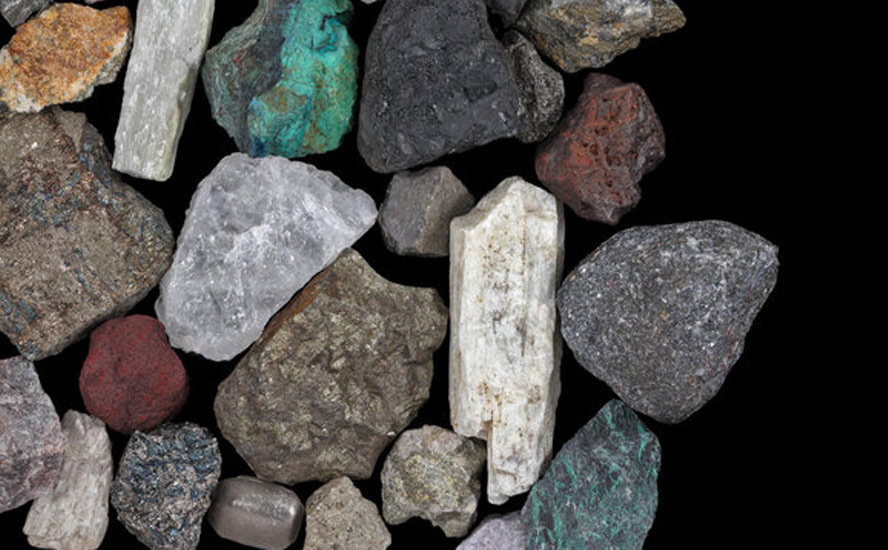As China goes green, copper market expected to tighten further
2020.10.29
The most pessimistic forecasts of copper demand, and pricing, during the worst pandemic in 102 years, have failed to materialize.
From a four-year low in March, when the coronavirus slammed into Europe and North America, the red metal used widely in construction, communications, transportation and energy transmission, has mounted a serious comeback.
As of this writing spot copper is trading at $3.08 per pound, compared to around $2.10/lb in mid-March – a gain of 46%. The spot price has stayed above $3.00 since Oct. 8 – which is remarkable considering the reports of impending economic doom, amid a second wave of covid-19 infections in Europe and North America.
The following analysis by AOTH has copper showing no signs of slowing down; in fact, while the copper market was tight before the pandemic began, we expect it to tighten even further, due to a constellation of factors, starting with China.


The Chinese economy became the first major world economy to return to its pre-virus growth trajectory, when it posted positive numbers in the second quarter. Recent figures from China’s National Bureau of Statistics indicate that third-quarter GDP growth is up 4.9% from a year ago. Between April and June, Q2, the bureau reported a 3.2% rise. The Chinese are well ahead of their trading rivals as they strive to put the pandemic for which they were responsible, behind them.
According to the World Bank and the OECD, the Chinese economy in 2020 will grow 2% – the only G20 country to mark positive economic output this year. Beijing has managed to largely contain the virus in recent months after the pandemic shut down its economy. Commerce and travel have been allowed to resume, which is driving economic growth and fueling demand for copper and other industrial metals, like aluminum and nickel, whose prices are also climbing.
Other reasons for a rising copper price include covid-related restrictions imposed on the copper mining industry, along with speculative interest in the metal due to a weaker US dollar.
Copper output from the world’s top 10 producers declined 3.7% during the second quarter, due to nation-wide lockdowns in Chile, Peru and Mexico.
China’s copper dominance
Chinese growth statistics have always figured prominently in copper price forecasts – no surprise considering that China is responsible for just under half of the world’s production of copper and copper alloys semis, the industry term for first-stage products made from refined copper.
The Asian superpower is also the largest importer of unwrought copper, along with copper ores and concentrates.
Its manufacturing sector back on track, China’s copper imports rose sharply over the past four months; in September, the country imported 62% more copper than the same month in 2019. Unwrought copper imports of 4.9 million tonnes during the first nine months of the year, were up 41% from the same period last year.
According to Reuters columnist Clyde Russell, China has been vacuuming up copper, boosting the price at a time when demand elsewhere in the world was looking sickly as the virus spread.
Why is China importing so much copper? Russell claims the buying spree is being driven by Beijing’s stimulus spending following the national lockdown during the first four months of the year. But he also says it is likely that substantial volumes of copper are flowing into stockpiles, either strategic or commercial.
We agree, and have been writing quite a bit about this lately.
Obviously we can’t say for sure, given China’s opaque statistics, but we suggest a good chunk of the raw materials are going into bulking up the Chinese Military, in particular its navy patrolling the South China Sea. In other words, China is preparing for war.
The mining industry’s experience of China locking up the world’s mineral resources testifies to how far the Chinese will go to ensure their ever-growing demand for mined commodities is met.
Locking up supply
While iron ore and copper were the hot targets of overseas acquisitions by Chinese firms as they sought to feed an economy that up until 2015 was growing at double digits, the Chinese have also gone after gold, nickel, tin and coking coal. More recently the most desired metals are those that feed into the global shift from fossil fuels to the electrification of vehicles. This has meant a hunt for lithium, cobalt, graphite, copper and rare earths – metals that are used in electric vehicles, of which China has become the world’s leading manufacturer.
EVs use a lot of copper, four times as much as a regular vehicle, and China hasn’t been shy about boosting its copper reserves to meet expected demand.
Two large Peruvian copper mines are owned by Chinese companies. Chinese state-run Chinalco owns the Toromocho copper mine, while the La Bambas mine is a joint venture between operator MMG (62.5%), a subsidiary of Guoxin International Investment Co. Ltd (22.5%) and CITIC Metal Co. Ltd (15%). The Chinese-backed Mirador mine in Ecuador opened in 2019.
Most of the metal produced under these off-take agreements will NEVER come to the market anyplace other than in China. Those metals that do, can have their supply shut down any time the Chinese want.
In Brazil, Chinese banks and investment groups have committed $15 billion of a $20b China-Brazil Fund, launched in 2016 to finance infrastructure projects.
The Made in China 2025 initiative, which aims to make China’s copper industry more efficient, is expected to grow Chinese copper demand by an additional 232,000 tonnes by 2025. This isn’t counting the need for more copper for railways, electric vehicles, car motors and power transformers.
China’s Belt and Road Initiative (BRI) is a $900 billion program to open channels between China and its neighbors, mostly through infrastructure investments.
China long ago put a lock on much of Africa’s vast resources.
China’s plans
China’s terrible air and water pollution, accumulated from several years of break-neck industrial growth, has been cited in numerous edicts from Beijing to shut down polluting, often unregulated mines, and to clean up smog-belching factories.
Arguably though, China’s environmentalism has been driven by necessity. The one thing the Chinese Communist Party (CCP) cannot abide is an insurrection, mounted by peasants or poor factory workers, who could rise up against the government due to sicknesses and deaths from widespread pollution. So with one hand China tries to fix the environment, and with the other it buys coal from North Korea and builds new coal-fired power plants.
Currently, a major shift is taking place regarding the environment at the highest levels of the CCP. It began last month when President Xi Jinping pledged to make the country carbon-neutral by 2060, and has continued to a revised Five Year Plan.
Al Jazeera does a good job of explaining why this is such a big deal:
Before September, few expected China to promise more ambitious curbs on climate-warming greenhouse gases over the next five years, with policy documents signalling Beijing’s intent to make energy security and the economy its top priorities. It was also expected to go on a new coal-fired power construction spree, but government scholars have been forced to revise their old drafts.
“Right now, every level of government is busy working on the 14th Five-Year Plan,” said Kevin Lo, associate director at the David C. Lam Institute for East-West Studies in Hong Kong, who studies China’s environmental policies.
“The understanding is that there is no time to waste if China is to achieve carbon neutrality by 2060.”
Reaching the carbon-reduction goals in China’s 14th Five Year Plan, 2021-25, may involve setting an absolute emissions cap for the first time ever. On Monday Chinese policymakers gathered at a plenum to figure out how to meet President Xi’s radical new climate targets, made real after Xi told the United Nations that China will offset all its emissions within 40 years.
Al Jazeera quotes one energy expert who says that China would need to stop building all new coal-fired power plants. The Development Research Center, a Cabinet think-tank, predicts that meeting the targets will involve doubling wind and solar capacity to around 500 gigawatts by 2025.
Meanwhile China has rolled out a ‘new infrastructure plan’ that is big on local ore beneficiation, and has a focus on high-tech infrastructure.
In its latest report, Fitch Solutions discusses how the plan will boost production of “high-end metals” as opposed to primary metals like iron ore.
Working with existing industrial policies like Made in China 2025 and the China Standards 2035 plan, Fitch says the new infrastructure plan signals China’s ambitious long-term strategy to becoming a global leader in high-tech industries.
Included among new infrastructure projects, are 5G networks, data centers, artificial intelligence (AI), ultra-high-voltage (UHV) technology, EV charging stations and high-speed rail.
According to Fitch, the plan will require lighter, more advanced metals, compared to say, normal steel products like rebar, giving high-end copper, aluminum and steel a strong boost going forward. Close to a million tonnes of high-end aluminum and 32Mt of specialty steel are needed in 2020 alone, the consultancy anticipates, with the figures rising in 2021 and 2022 as more projects are rolled out. Key demand drivers are UHV power cables, urban mass transit and 5G network base stations.
According to the International Copper Association (ICA), copper consumption in China is expected to increase by 232,000 tonnes annually up to 2025, due to the installation of higher-efficiency industrial motors and distribution transformers, the electrification of new railways, and new energy vehicles (NEVs) for industrial use.
New copper contract
From these plans, it is abundantly clear that China, which is already breaking records for copper imports, is going to be bringing in more red metal. Potentially A LOT more.
No coincidence, therefore, that a new international copper contract is being launched Nov. 19, on the Shanghai International Energy Exchange. (INE) Unlike the existing copper contract, which trades on the Shanghai Futures Exchange (ShFE), the new derivative will, according to Clyde Russell’s above-cited column, be open to trade by foreigners and should offer a much easier path to get exposure to China’s copper market.
ShFE is mostly geared towards Chinese traders. The hope, states Russell, is that the new copper futures contract will replicate the success of the INE’s oil futures derivative, which has allowed for the delivery of several Middle Eastern crude grade to various Chinese ports, and gives traders exposure to prices at both the loading and delivery points.
The Biden factor
China is by far the most important player in the copper market, but there are other areas that should be looked into when forecasting supply and demand. Two of the biggest unknowns right now, are how soon the global economy can be resurrected from covid-19; and whether Joe Biden, a tax and spend Democrat who has promised a $2 trillion clean energy plan, will beat Trump in the Nov. 3 election that is coming up fast.
Biden has signaled he will embrace central concepts of the “New Green Deal” – a program first espoused by New York Senator, and Democratic wing-nut, imo, Alexandria Ocasio-Cortez – including spending $1.7 trillion over 10 years to achieve 100% clean energy and net-zero emissions by 2050.
(“AOC” will reportedly serve on a panel helping Biden to develop climate policy.)
Dubbed “Clean Energy Revolution”, Biden’s climate plan calls for installation of 500,000 electric vehicle charging stations by 2030, and would provide $400 billion for R&D in clean technology.
Key to Biden’s $1.3 trillion infrastructure improvement plan, is a $50 billion investment in repairs to roads and bridges; $10 billion for transit construction in poor areas of the country; a doubling of BUILD and INFRA grants, and more funding for the US Army Corps of Engineers.
The plan also includes investments in high-speed rail, public transit, bicycling, school construction, expansion of rural broadband, and replacement of pipes and other water infrastructure.
The Biden campaign has reportedly told US miners it supports boosting production of metals used to make EVS, solar panels and other materials crucial to his climate plan. Biden also supports bipartisan efforts to build a domestic supply chain for lithium, copper, rare earths and other strategic materials the US currently imports from China and other countries.
If Biden snatches the presidency from Trump, and the Democrats manage to sweep both Houses of Congress, there will almost certainly be huge investments in clean energy and the raw materials it requires, including copper. If Trump wins, it will be business as usual, ie., continued support of the oil and gas industry, and limited federal money put towards renewable energy/ electrification.
Covid wildcard
Whoever is installed in the White House in January, they will face the daunting challenge of pulling the US out from under the 1,000-pound gorilla sitting on its chest: covid-19.
Can we expect an economic recovery? The way things are going in the US, which still leads the world in cases and deaths, it doesn’t look good.
The $2.2 trillion stimulus package agreed to by Trump and Nancy Pelosi was chopped down by Senate Republicans to a half a billion. That lesser package was recently rejected by Senate Democrats.
Globally there is no recovery. The IMF estimates the world economy will contract by 4.4% this year.
Countries that lifted lockdowns, and aren’t in a second wave, are facing a long period of modest expansion, meaning it will likely take many months, if not years, for the global economy to bounce back to pre-pandemic levels.
While hopes are pinned on a new vaccine, or vaccines, there are voices warning that even if a successful immunization system is introduced, it won’t be an instant economic panacea. “In terms of actually getting back to pre-Covid or trend growth, it could take more than a year,” said Chris Chapman, a portfolio manager in charge of $660 billion, quoted this week by Bloomberg.
For copper, that means the heavy lifting will have to be done by China, currently the only country nearly fully recovered from the virus.
Tight mined copper supply
However, there is one light at the end of a dark covid-19 tunnel, and that is tight mined copper supply.
According to the International Copper Study Group (ICSG), the refined copper market is likely to register a deficit this year of 52,000 tonnes – against a 280,000t surplus the group forecast this time last year. The reason, we know, is an unexpected push for copper imports from China; and the fact that global copper production has been upended by the coronavirus. The ICSG predicts copper mine production will fall 1.5% this year, the second consecutive year of lower output.
Longer-term, copper supply is almost certain to be squeezed.
As we have reported, without new capital investments, Commodities Research Unit (CRU) predicts mine production will drop from the current 20 million tonnes to below 12Mt by 2034, leading to a supply shortfall of more than 15Mt. Over 200 copper mines are expected to run out of ore before 2035, with not enough new mines in the pipeline to take their place.
For copper producers, a bullish signal right now comes from Freeport McMoRan. The US-based copper miner every year negotiates the following year’s benchmark deal for the copper industry at an exclusive Park Lane hotel during London Metal Exchange Week.
A tight copper market in 2020 allowed Freeport to strike deals that offered the lowest smelter processing fees in nearly a decade. This year, the miner is expecting to reach similarly favorable terms, reportedly because the pandemic is stoking market uncertainty and keeping mine supply tight, a central pillar in copper’s rebound to a two-year high above $7,000 a ton last week.
“We definitely see a continuing deficit of concentrate in the market,” said [Senior Vice President of Marketing and Sales Javier] Targhetta, referring to the mined ores extracted by Freeport and other producers. “I’d look at a small number plus or minus,” compared with the current benchmark, he said.
Meanwhile JP Morgan, which also attended London Metal Exchange Week, commented that,
“After a week full of virtual meetings, our bullish view on copper first established in April and reaffirmed in August hasn’t changed,” analysts from the investment bank said in a note. They forecast copper prices will reach $7,500 a tonne ($3.40/lb) in the second quarter of 2021.
“While there were some disagreements around the price targets during our calls, we concluded that this constructive view on copper seems to be consensus by now.”
Technical analysis bullish
Still skeptical that copper is doing so well during a pandemic? For the non-believers, we turn to the charts. A recent Blomberg Intelligence report titled ‘Futures Focus – Firming Commodity Price Foundation’, bravely takes on crude oil, gold, copper and grains.
The sections on copper and gold are particularly uplifting.
“The metals sector is a top contender for sustained leadership as evidenced by one-year curves – copper backwardation and gold contango indicate demand exceeding supply,” writes BI commodity strategist Mike McGlone.
According to McGlone, despite LME copper at $7,000 a ton ($3.17/lb) facing resistance on Oct. 21, a new bull market above $7,000 is sustainable, “although plenty of wood may need to be chopped.”
His analysis also shows a bullish divergence for copper versus the stock market:
The advancing copper price toward the end of October, despite a declining stock market, indicates a bullish inflection point for the metal, in our view. Copper is sustaining above $3-a-pound resistance for the longest period in about two years and may be turning this level into support. Our graphic depicts the metal advancing to its highest price since 2018, compared with the CME E-Mini Nasdaq 100 Stock Index future struggling to sustain above 12,000 resistance. This divergence indicates a solidifying copper foundation for recovery.
Conclusion
Resource nationalism is the tendency of people and governments to assert control, for strategic and economic reasons, over their natural resources. Traditionally, developing countries have seen the benefits of foreign companies coming in to extract their natural resource endowment, in the form of jobs and higher wages for their often-impoverished citizens, and government revenues through taxes, royalties or dividends.
There can also be indirect benefits such as knowledge and technology transfers. Foreign investments often involve infrastructure spending, sometimes on a massive scale, like electricity, water supplies, roads, railways, bridges and ports. The Chinese have used this model very effectively in Africa, where they have set up mining operations but also built schools, roads, water infrastructure, etc.
China leads the world in the manufacture of electric vehicles and charging stations, far exceeding second-place USA. China has the most installed solar capacity, wind power, and hydrogen production. And as we discovered during the pandemic, China is also the world’s major producer of ventilators, respirators and other personal protective equipment front line health workers are in desperate need of, and some have died from the lack of. Let’s hope the coronavirus is the final nail in the coffin for China’s dominance of the global supply chain.
The bottom line? China cannot continue to supply us, in Canada and the United States, with everything. The time has come, and Trump is right about this, to get serious about re-making global supply chains that cut China out of the loop.
The problem with copper is there is so much demand for it, and not enough new mines being built to expand the supply – not only for traditional uses, like copper wiring and piping, but in clean energy applications such as electric vehicles, trains and 5G. Are the 20 million tonnes of copper mined globally going to be enough to meet the massive amount of metal required by major planned infrastructure and clean energy investments, in not just China and the United States, but other countries as well?
Getting enough copper is also challenged by climate change, evidenced by water shortages currently experienced in top producer Chile; the fact that China is vacuuming up all the excess supply, and stockpiling it; and the open question as to whether copper mines that have either been taken offline by the pandemic, or had their output cut, will ever return to normal production and staffing levels? Is full mine production, globally, even possible during a pandemic? If not, expect copper supply to continue lagging demand for the foreseeable future.
China is both a help and a hindrance to the copper market. A help obviously by buying so much copper that it is elevating the price; but a threat in that China with all its ambitious planning will demand so much copper that it puts the squeeze on everyone else, including us here in Canada and the US.
We haven’t locked up the world’s resources. China has. In a world of finite metals, many of which are getting scarcer, this puts us in a very vulnerable position. Where are we going to get the minerals we need?
China is increasing its buying of deposits that will result in offtake agreements, meaning this metal is effectively off limits to the market. And they’re solidifying alliances with the countries they need to supply them with raw materials, through their Belt and Road Initiative.
Those countries with copper deposits are in future more likely to hang onto them than previously, when the copper supply-demand imbalance was less obvious.
I believe these challenges to supply will exacerbate the tightness in the copper market, and will eventually prove that resource nationalism is something we are really going to have to monitor in our investments.
Richard (Rick) Mills
aheadoftheherd.com
subscribe to my free newsletter
Ahead of the Herd Facebook
Legal Notice / Disclaimer
Ahead of the Herd newsletter, aheadoftheherd.com, hereafter known as AOTH.
Please read the entire Disclaimer carefully before you use this website or read the newsletter. If you do not agree to all the AOTH/Richard Mills Disclaimer, do not access/read this website/newsletter/article, or any of its pages. By reading/using this AOTH/Richard Mills website/newsletter/article, and whether or not you actually read this Disclaimer, you are deemed to have accepted it.
Any AOTH/Richard Mills document is not, and should not be, construed as an offer to sell or the solicitation of an offer to purchase or subscribe for any investment.
AOTH/Richard Mills has based this document on information obtained from sources he believes to be reliable but which has not been independently verified. AOTH/Richard Mills makes no guarantee, representation or warranty and accepts no responsibility or liability as to its accuracy or completeness. Expressions of opinion are those of AOTH/Richard Mills only and are subject to change without notice. AOTH/Richard Mills assumes no warranty, liability or guarantee for the current relevance, correctness or completeness of any information provided within this Report and will not be held liable for the consequence of reliance upon any opinion or statement contained herein or any omission. Furthermore, AOTH/Richard Mills assumes no liability for any direct or indirect loss or damage or, in particular, for lost profit, which you may incur as a result of the use and existence of the information provided within this AOTH/Richard Mills Report.
AOTH/Richard Mills is not a registered broker/financial advisor and does not hold any licenses. These are solely personal thoughts and opinions about finance and/or investments – no information posted on this site is to be considered investment advice or a recommendation to do anything involving finance or money aside from performing your own due diligence and consulting with your personal registered broker/financial advisor. You agree that by reading AOTH/Richard Mills articles, you are acting at your OWN RISK. In no event should AOTH/Richard Mills liable for any direct or indirect trading losses caused by any information contained in AOTH/Richard Mills articles. Information in AOTH/Richard Mills articles is not an offer to sell or a solicitation of an offer to buy any security. AOTH/Richard Mills is not suggesting the transacting of any financial instruments but does suggest consulting your own registered broker/financial advisor with regards to any such transactions
Legal Notice / Disclaimer
Ahead of the Herd newsletter, aheadoftheherd.com, hereafter known as AOTH.Please read the entire Disclaimer carefully before you use this website or read the newsletter. If you do not agree to all the AOTH/Richard Mills Disclaimer, do not access/read this website/newsletter/article, or any of its pages. By reading/using this AOTH/Richard Mills website/newsletter/article, and whether you actually read this Disclaimer, you are deemed to have accepted it.



























